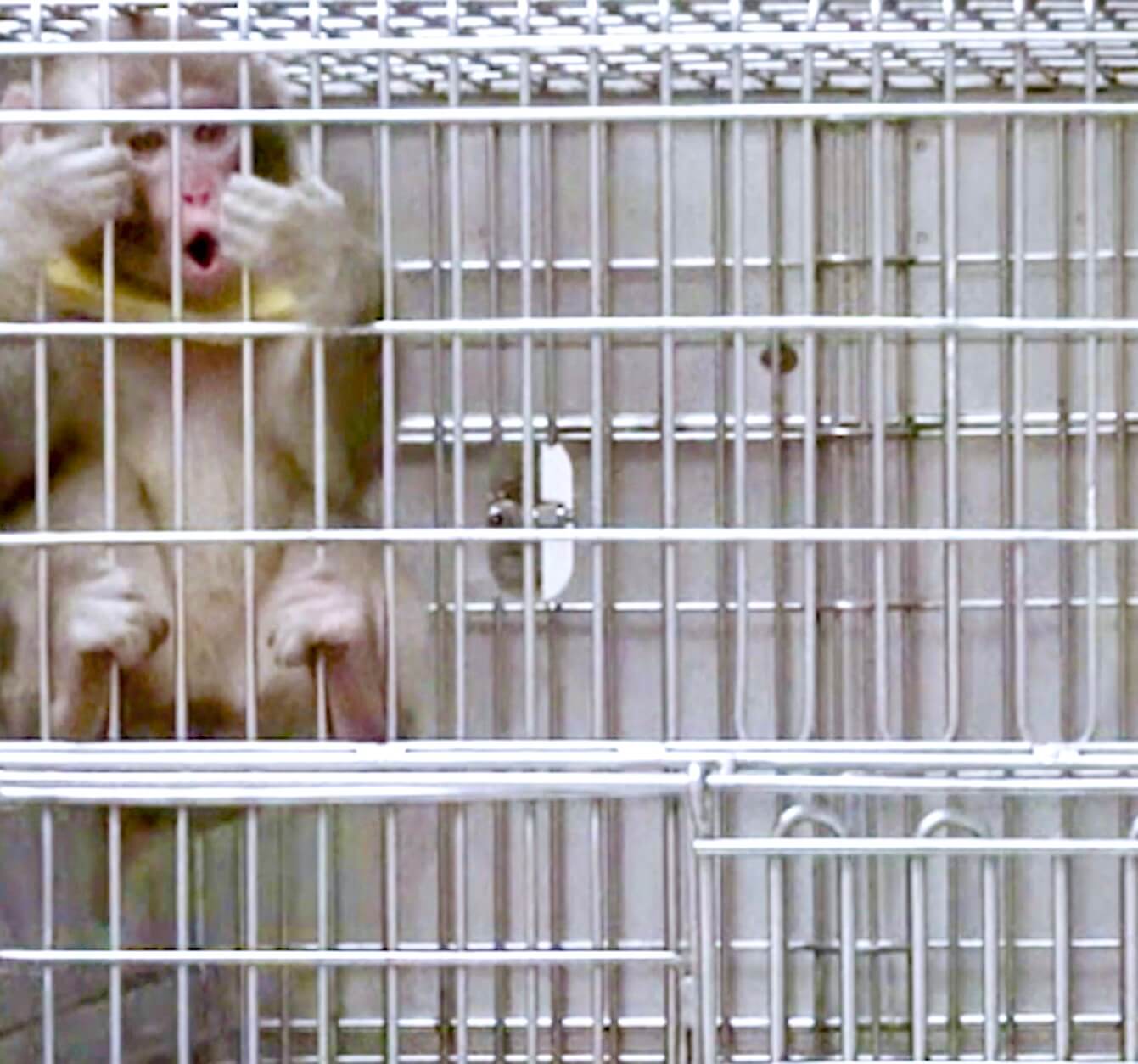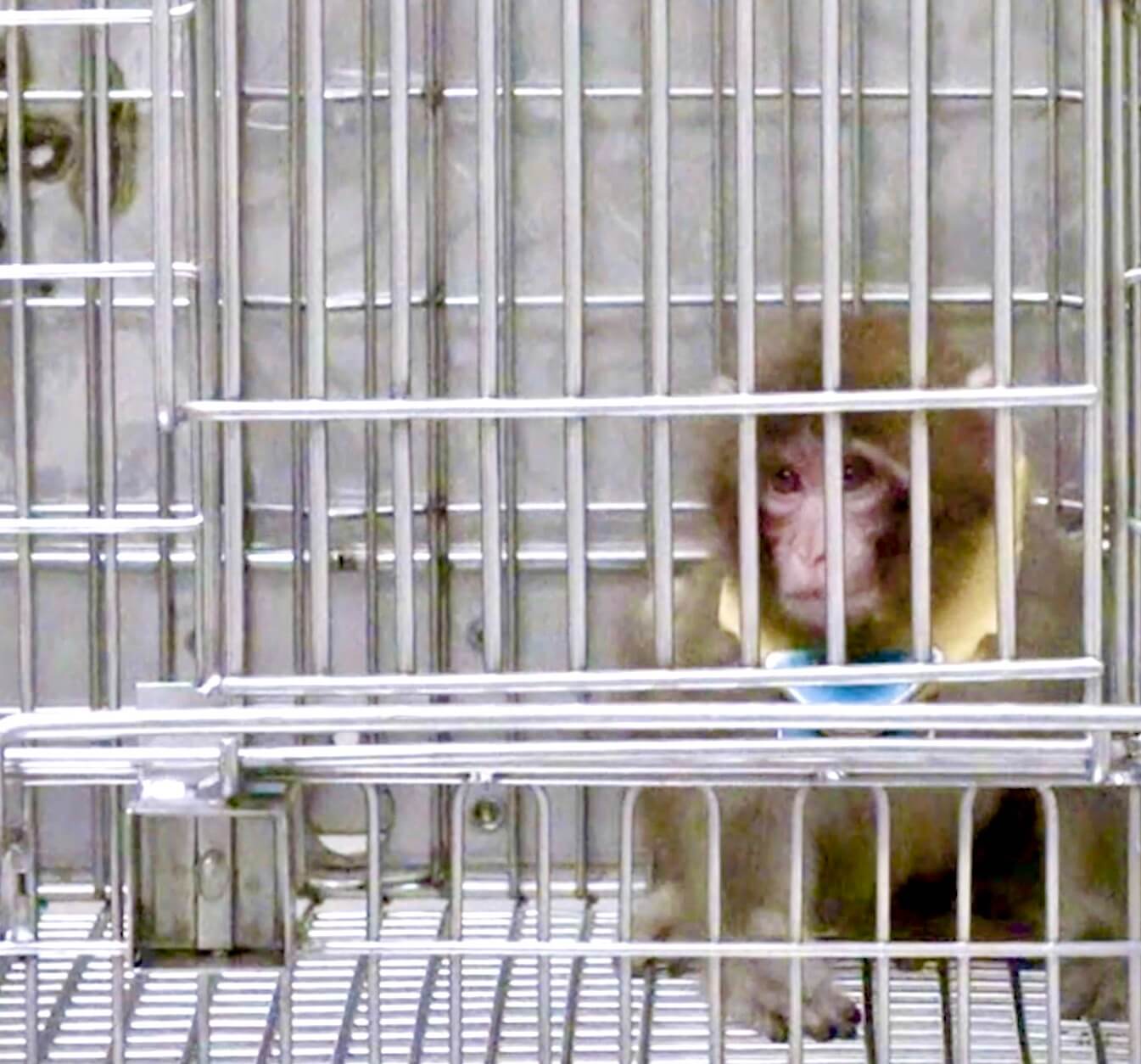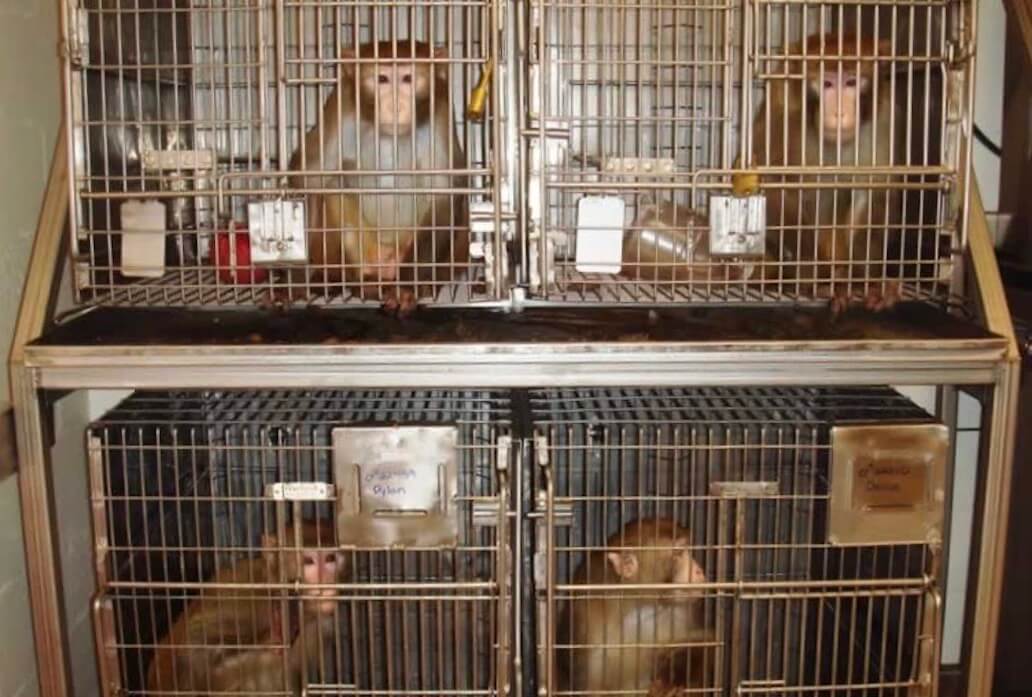The Cruel Monkey Experiments ONPRC Didn’t Want You to See
The abuse inside the Oregon National Primate Research Center (ONPRC) is so grotesque and prolific that adjectives simply fail to describe the horror accurately. That’s why, for the past 20 years, PETA has released numerous truly disturbing videos shot inside the ONPRC, including this never-before-seen footage that we just obtained following a legal battle.
Prying Footage out of Their Cruel, Speciesist Hands
After learning that an experimenter at the ONPRC had recorded video footage of “junk food” experiments on monkeys, PETA requested these recordings. But Oregon Health & Science University (OHSU), a publicly funded university that administers the ONPRC, denied the request and fought tooth and nail to keep the footage from seeing the light of day.
PETA sued. And now you can see what your tax dollars supported.
Elinor Sullivan: Monkey Tormentor and Gardening Enthusiast
This time the video is connected to the laboratory of Elinor Sullivan, whose experiments involve impregnating Japanese macaques, feeding some of the expectant mothers high-fat food, separating the babies from their mothers, and deliberately frightening the infants. Experimenters kill most of—if not all—the young monkeys at 13 months old and study their brains.
The new videos show the human intruder test (HIT). Terrified young monkeys are removed from their “home” environment, which had included their mom and/or friends; taken to a different room; and placed alone in a small, barren, unfamiliar cage. Some of the young monkeys were so upset and traumatized by this sudden separation that they would desperately fling themselves about the cage. Others remained nearly motionless, too terrified to move.
 Obtained through FOIA by PETA
Obtained through FOIA by PETA
 Obtained through FOIA by PETA
Obtained through FOIA by PETA
An experimenter then makes threatening gestures, such as prolonged eye contact, to determine whether the young monkeys can be intimidated. The experiment is a kind of live-action version of the infamous Mr. Potato Head experiment.
Aside from their obvious cruelty, Sullivan’s experiments are also so scientifically flawed that they are essentially meaningless, experts say, destroying monkeys’ lives and wasting taxpayer dollars.
Dr. Lisa Jones-Engel, a primatologist who reviewed the recordings of Sullivan’s videos and research, believes the experiments introduce far too many unaccounted-for variables. It is highly likely that the differences in temperament observed by Sullivan were produced not by the experimental dietary changes but simply by differences in how the monkeys were reared. For macaque infants, their mothers’ rank in the group has a significant and lifelong impact on their own socialization and temperament. The dozens of infant monkeys used by Sullivan were raised in remarkably diverse social and rearing conditions. These fundamental variables, Jones-Engel says, have “profound implications” that render Sullivan’s findings hopelessly confounded and useless.
But Sullivan continues to rake in the tax money, hand over fist, anyway. The experimenter, who has been funded through the National Institutes of Health (NIH) for nearly a decade, received a whopping $5.2 million in tax money for the years 2011 to 2019 alone.
Sullivan doesn’t just torment infant monkeys. In 2010, the same year she published an experiment in which the brains of monkey fetuses were removed and full-term baby monkeys were deliberately frightened with a Mr. Potato Head toy, she published studies looking at the effect of exercise and diet on female adult monkeys. In these studies, experimenters cut off the heads—”quickly decapitated” in euphemistic laboratory-speak—of 11 adult monkeys and removed their brains. And in another, Sullivan and her colleagues forced monkeys to run on treadmills at increasing speeds until they collapsed from exhaustion.
In 2018, she published the results of an experiment in which half the female monkeys’ pregnancies ended in miscarriage because the animals, who thrive on a clearly delineated hierarchical structure, were thrown together as strangers, resulting in “an unstable group environment.”
That same year, she published an experiment in which 7-month-old monkeys were killed by exsanguination, a laboratory euphemism meaning “bleeding to death,” and another in which 14-month-old monkeys were killed the same way.
We know Sullivan torments monkeys for profit. But in an obvious marketing attempt to make her seem more relatable, her OHSU faculty page says that she enjoys “gardening and playing with her dogs.”
A History of Abuse
Beginning with releasing video footage from our first undercover investigation of the facility in 2000, we have kept the pressure on the ONPRC. PETA followed up with a second investigation in 2007, uncovering yet more damning evidence of atrocities perpetrated against monkeys.
Decades of Documented Suffering
Sullivan is hardly an outlier when it comes to monkey torment at the ONPRC.
For 40 years, her colleague Eliot Spindel has injected pregnant rhesus monkeys with nicotine or surgically implanted nicotine pumps in their backs in order to observe the drugs’ effects on their babies. In one experiment, he pumped monkeys with high doses of vitamin C, removed the fetuses, and performed invasive “lung function” tests on them before killing and dismembering them.

The facility itself has a decades-long record of incompetence and cruelty, according to federal inspection reports obtained by PETA. Recent events include the following:
- A young monkey was euthanized after she became trapped in PVC pipes.
- Workers failed to give pain medications to a monkey after he was used in an experimental surgery.
- A juvenile monkey died after OHSU workers failed to notice that he was trapped behind a cage.
- A monkey’s tail had to be amputated after he was carelessly moved from one cage to another and some of his skin was painfully torn from a portion of his tail.
- A monkey who was on a list restricting her from experimental surgery was subjected to a caesarean section and an embryo transfer anyway because of negligence, incompetence, and a lack of oversight.

Experimenters have deviated from approved protocols, exposing monkeys to additional pain and distress. Two primates were burned by an electric heating pad that wasn’t monitored adequately. Two monkeys were found unresponsive after they were given the wrong dose of insulin, and one had to be euthanized. One inspection report said that more than half the rhesus macaques had “significant” hair loss—an indication that they were suffering from extreme psychological distress.
It has been shown that monkeys in laboratories would rather starve than subject their friends to harm. What would you do to prevent harm? You can start by taking action. Animals are not ours to experiment on, and your voice is vital in the fight for their liberation.
Shut. It. Down.
As of 2022, there were 5,496 monkeys imprisoned at the ONPRC, making it one of the largest primate laboratories in the world. OHSU gladly took $432,737,548 in government handouts in fiscal year 2022 through taxpayer-funded NIH to continue its senseless experiments. The facility’s decades-long history of incompetence and unrelenting cruelty make it imperative that it shut down immediately and funnel its money into cutting-edge, non-animal experimentation that promises real results for human patients.